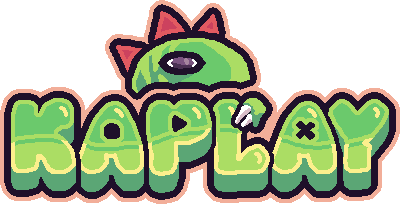Installation
Recommended Installation
Once you have Node.js installed, the easiest way to get started with KAPLAY is to use
our installation package, which
will generate a project for you using the recommended structure.
npx create-kaplay myGame && cd myGameThen, using npm run dev you can start the development server, where you can test your game locally at https://localhost:5173.
npm run devThat’s it! You’re ready to start making games. If you want to know all the options available
in the create-kaplay package, run npx create-kaplay --help.
Zero Bundlers Installation
If you prefer to use KAPLAY without any bundlers, you can! Start with
an index.html file:
<html>
<head>
<title>My Game</title>
</head>
<body></body>
</html>Now, for using KAPLAY library with a CDN, we have 2 methods:
Method 1: JavaScript Modules (Recommended)
You can import KAPLAY using JavaScript modules. This is the recommended method.
Create a main.js script file and connect it to your index.html:
<body>
<script type="module" src="./main.js"></script>
</body>Then, import the KAPLAY library inside index.html:
// main.js
import kaplay from "https://unpkg.com/kaplay@3001.0.19/dist/kaplay.mjs";
kaplay();Method 2: Legacy JavaScript
Create a main.js script file. Connect both main.js and KAPLAY library into your
index.html:
<head>
<script src="https://unpkg.com/kaplay@3001.0.19/dist/kaplay.js"></script>
</head>
<body>
<script src="./main.js">
</script>Custom Node.js Installation
So, you’re a pro? Let’s get into creating our own template using Node.js. First, we need to install KAPLAY library in a fresh folder:
npm install kaplayYou’ll need to use a bundler to use KAPLAY with NPM. There’s a lot of options
like esbuild, webpack, parcel, vite, etc. This is a short example using esbuild.
npm install esbuildOnce you have esbuild installed, and you have this in a .js or .ts file:
import kaplay from "kaplay";
kaplay();just run
esbuild game.js --bundle > build.jsand it’ll find the KAPLAY package and include it in the built build.js,
include build.js in your HTML and you’re good to go. Feel free to automate
this process.
